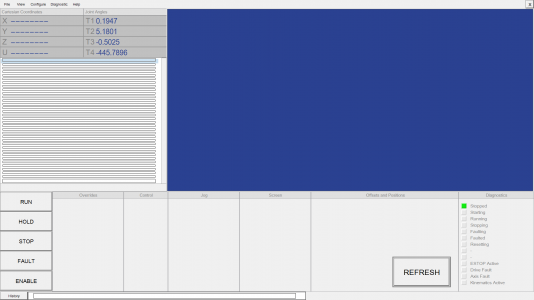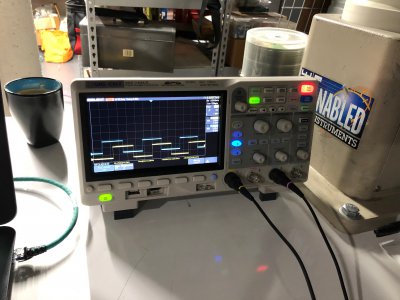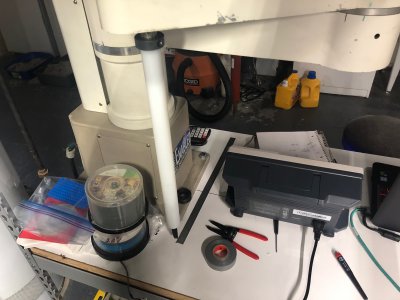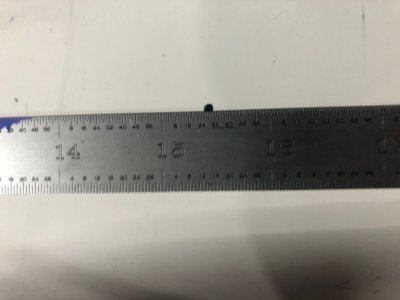- Joined
- Mar 26, 2018
- Messages
- 2,724
Did a bit of work on the robot hardware again yesterday and measured the "zero angle orientations". This is the angular distance between the home position (random based on home sensor installation) and the cartesian world definition (the XY axes of the table the robot is mounted to). In layman's terms, this is the difference in angle of each joint from home position to "arm-straight-out"
This was admittedly a super frustrating experience. I need to measure this as accurately as possible to allow the kinematics to give accurate final positioning of the robot, however even leaning on the table top could generate a 30 thou movement in the dial. I drew out a straight line down the table centered on the robot base and called this the workspace Y axis. I centered the indicator tip over this line to the very best of my abilities (using the yellow plastic level as a vertical fence) and swept the T1 axis back and forth. The position of highest indicator travel indicated when the axis was lined up with the Y axis.
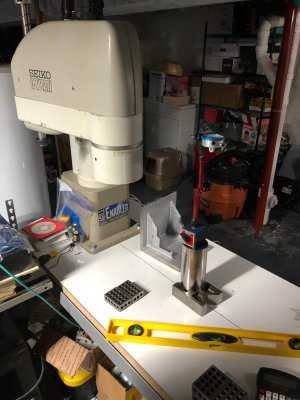
In tried measuring on the casting, but found it too uneven to get good measurements. The machined steel bearing between the joints was better. I took 10 measurements (looking at the PLC's reported axis position measured from the motor encoder) and did an average.
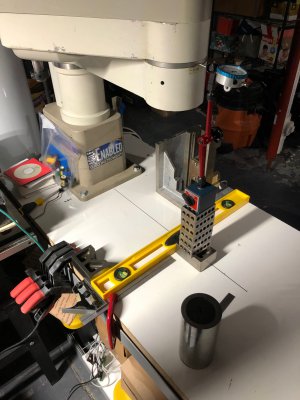
Once the T1 axis position was found, I turned that axis on and locked it in the zero angle position. I repeated the process with the T2 axis, measuring against the collar on the end of the ballscrew.
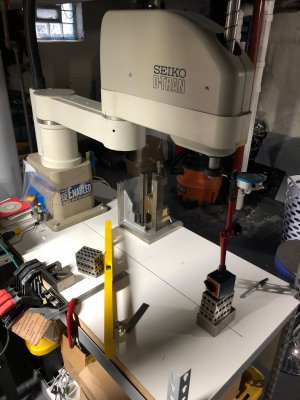
The zero angle orientations I measured (relative to the home position, CW motion positive) are the following:
T1 = -7.4910°
T2 = -18.8768°
Honestly I don't trust these numbers past 1 decimal point but whatever, it will be a good start. If I ever bump one of the homing sensors, I will need to remeasure these values. Here is the dialog box in the PLC which handles all the robot geometry.
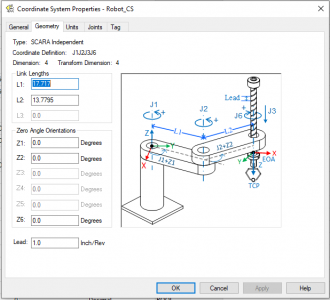
I *think* I should be able to get the kinematics working now. Wife and I are doing a few days of vacation this week so I'll tackle it when we get back!
This was admittedly a super frustrating experience. I need to measure this as accurately as possible to allow the kinematics to give accurate final positioning of the robot, however even leaning on the table top could generate a 30 thou movement in the dial. I drew out a straight line down the table centered on the robot base and called this the workspace Y axis. I centered the indicator tip over this line to the very best of my abilities (using the yellow plastic level as a vertical fence) and swept the T1 axis back and forth. The position of highest indicator travel indicated when the axis was lined up with the Y axis.

In tried measuring on the casting, but found it too uneven to get good measurements. The machined steel bearing between the joints was better. I took 10 measurements (looking at the PLC's reported axis position measured from the motor encoder) and did an average.

Once the T1 axis position was found, I turned that axis on and locked it in the zero angle position. I repeated the process with the T2 axis, measuring against the collar on the end of the ballscrew.

The zero angle orientations I measured (relative to the home position, CW motion positive) are the following:
T1 = -7.4910°
T2 = -18.8768°
Honestly I don't trust these numbers past 1 decimal point but whatever, it will be a good start. If I ever bump one of the homing sensors, I will need to remeasure these values. Here is the dialog box in the PLC which handles all the robot geometry.

I *think* I should be able to get the kinematics working now. Wife and I are doing a few days of vacation this week so I'll tackle it when we get back!




